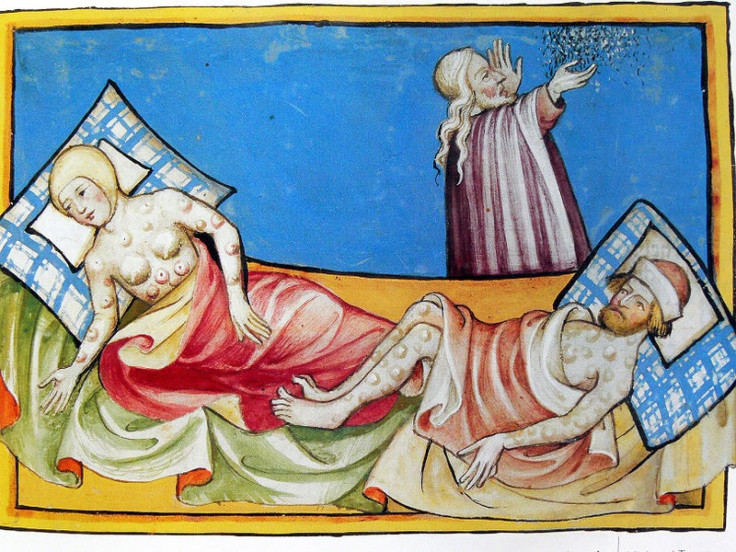Black Death Discovered In Oregon: Man Contracts Bubonic Plague From Cat, Hospitalized In 'Critical Condition'

The Black Death, a strain of bubonic plague that destroyed nearly a third of Europe's entire population between 1347 and 1369, has been found in Oregon. Health officials in Portland have confirmed that a man contracted the plague after getting bitten by a cat. The unidentified man, who is currently in his 50s, had tried to pry a dead mouse from a stray cat's mouth on June 2 when the cat attacked him.
A few days after getting bitten, the resident from the rural town of Prineville in Crook County developed a fever. By June 8, the man was so sick that he checked himself into St. Charles Medical Center in Redmond, Ore. He has since been transferred to the larger St. Charles facility in Bend. He was believed to be suffering from septicemic plague -- meaning the bacteria was spreading into his bloodstream -- and he is currently in critical condition.
This can be a serious illness, said Emilio DeBess, Oregon's public health veterinarian. But it is treatable with antibiotics, and it's also preventable.
The Black Death originated in rats -- black rats in particular -- but the bacteria thrives in forests, grasslands and any wooded areas inhabited by rats and squirrels. Even though rats were carriers, the disease was spread by the fleas that infested their bodies. Fleas would bite the rat, and the plague bacterium -- later identified as Pasteurella pestis, and renamed Yersinia pestis -- would stay in the intestinal track of the flea until the insect regurgitated it on its next victim; rodent populations can carry the plague bacteria without it killing them off, and the bacteria can travel back and forth from rats to fleas, also known as the sylvatic or enzootic cycle. When the fleas bit humans during this period, humans became exposed to the bacteria -- and became likely to die. Without the help of modern medicine, Europeans in the Middle Ages could do little to combat the plague.
Giovanni Boccaccio was an Italian writer who lived through the Black Death and wrote down his observations in his book, The Decameron.
...Such fear and fanciful notions took possession of the living that almost all of them adopted the same cruel policy, which was entirely to avoid the sick and everything belonging to them. By so doing, each one thought he would secure his own safety.
Bubonic plague victims feel excruciating symptoms, including fever, chills, headache, weakness and swollen nodes in the neck, armpit or groin. Even though there are about seven cases of the Black Plague in the U.S. each year, most cases have been in the West and the Southweset, the bacterium is considerably less fatal than it once was. According to the CDC, 1 in 7 cases are fatal, but the disease can now be treated with antibiotics.
Officials are still unsure whether the man's plague was contracted by the cat or by the mouse the cat was holding. The stray cat, which had wandered the man's neighborhood in rural Crook County neighborhood for about six years, has since died. It's been sent to the Centers for Disease Control and Prevention for testing.
DeBess has also collected blood samples from the man's cat and two dogs, as well as samples from his neighbors' pets, as well as from animals in the local shelter. More than a dozen people who were in contact with the sick man have been notified and are receiving preventive antibiotics.
By and large, however, health officials in Central Oregon aren't blaming the cat for what happened.
Taking a mouse out of a cat's mouth is probably not a good idea, DeBess told The Oregonian.
The reality is that, in rural areas, part of the role of cats is to keep the rodent population controlled around our homes and barns said Karen Yeargain, the Crook County Health Department's communicable disease coordinator.
The unidentified man from Prineville is the sixth case of the Black Plague in Oregon since 1995. According to the CDC, only about 10 to 15 people in the U.S. catch the disease each year, while globally, health officials report between 1,000 to 3,000 cases per year.
© Copyright IBTimes 2025. All rights reserved.






















